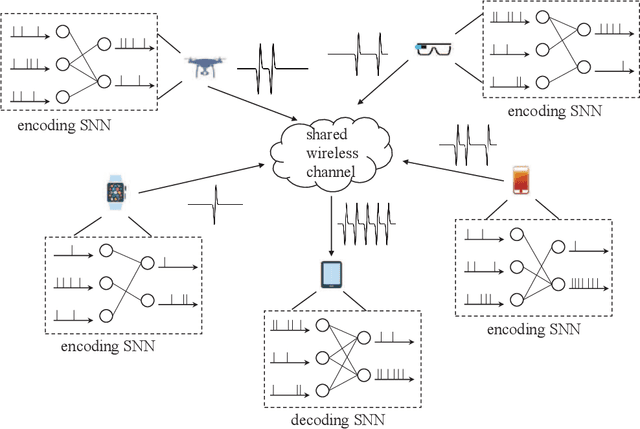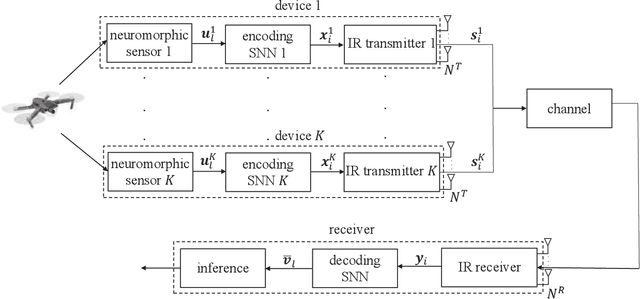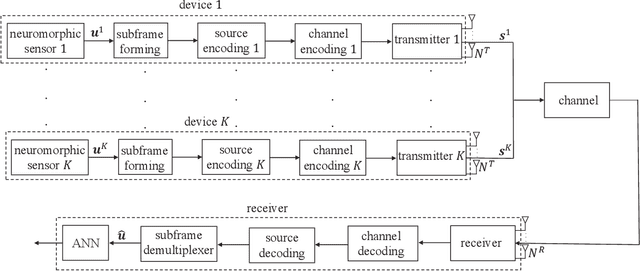Neuromorphic Wireless Cognition: Event-Driven Semantic Communications for Remote Inference
Paper and Code
Jun 13, 2022



Neuromorphic computing is an emerging computing paradigm that moves away from batched processing towards the online, event-driven, processing of streaming data. Neuromorphic chips, when coupled with spike-based sensors, can inherently adapt to the "semantics" of the data distribution by consuming energy only when relevant events are recorded in the timing of spikes and by proving a low-latency response to changing conditions in the environment. This paper proposes an end-to-end design for a neuromorphic wireless Internet-of-Things system that integrates spike-based sensing, processing, and communication. In the proposed NeuroComm system, each sensing device is equipped with a neuromorphic sensor, a spiking neural network (SNN), and an impulse radio transmitter with multiple antennas. Transmission takes place over a shared fading channel to a receiver equipped with a multi-antenna impulse radio receiver and with an SNN. In order to enable adaptation of the receiver to the fading channel conditions, we introduce a hypernetwork to control the weights of the decoding SNN using pilots. Pilots, encoding SNNs, decoding SNN, and hypernetwork are jointly trained across multiple channel realizations. The proposed system is shown to significantly improve over conventional frame-based digital solutions, as well as over alternative non-adaptive training methods, in terms of time-to-accuracy and energy consumption metrics.
 Add to Chrome
Add to Chrome Add to Firefox
Add to Firefox Add to Edge
Add to Edge